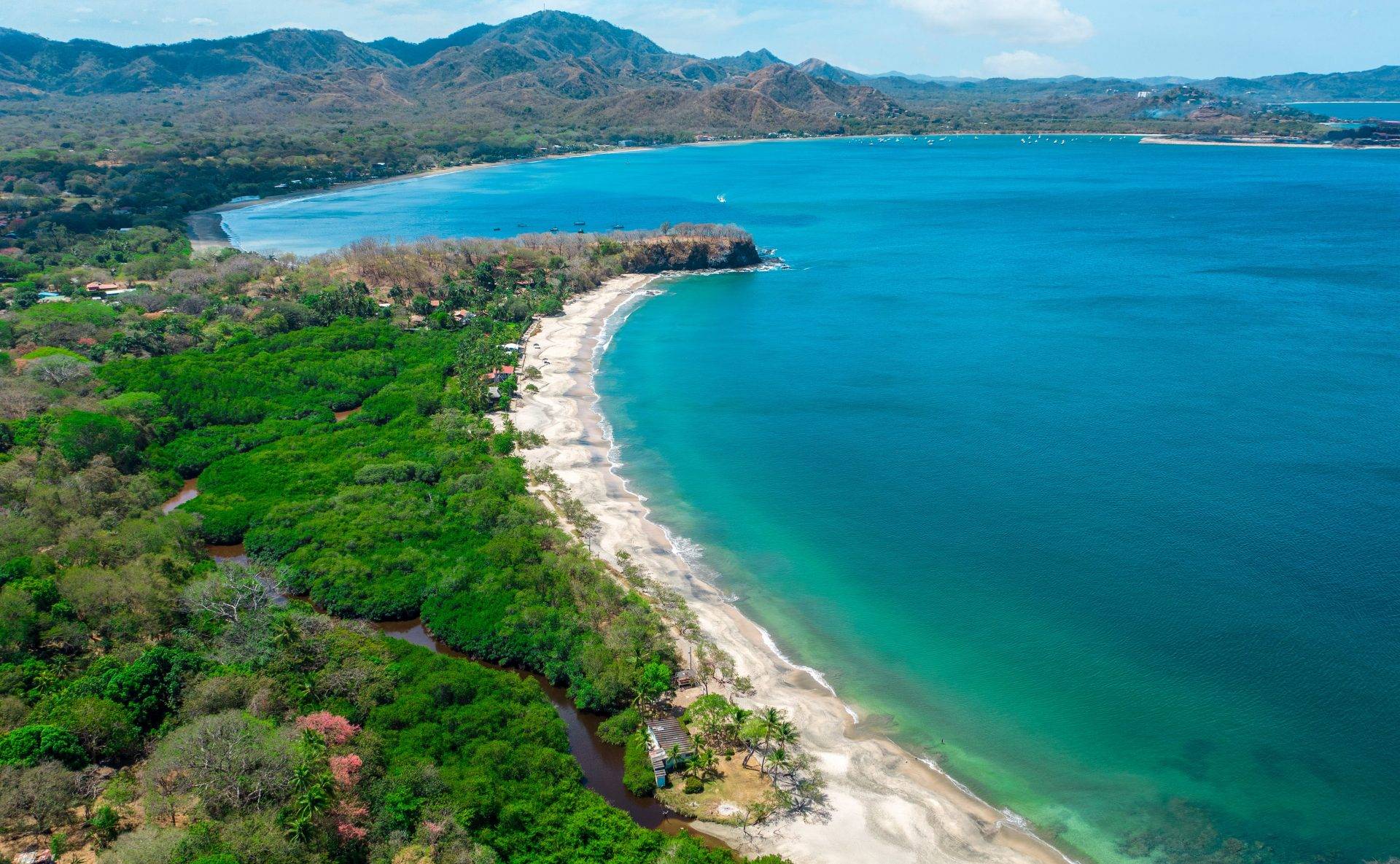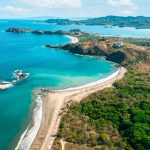In 2021, we were proud to transition Blue Water Adventures and Blue Zone Vacation Rentals to new ownership. Please visit them at Blue Zone Experience.
You may know that Costa Rica re-opened its borders in August 2020. You may also know that local and international regulations have changed, been refined, and updated since then. So, what’s the current status of Costa Rica coronavirus travel? The short answer: Pretty positive. We’ll get into the details.
Because you want the details. You would love to hear that it’s safe to travel again. While each of our experiences is unique, the world collectively agrees that 2020 was a challenging year. We, you, all of us are anxious to travel again – to shed the stress of a year’s worth of self-isolation and abandon ourselves to the delight and jubilation of a well-deserved vacation.
The good news: Costa Rica coronavirus travel in 2021 is fairly easy – Costa Rica is enthusiastically welcoming tourists – and, thanks to a country’s worth of outdoor activities and private vacation homes, you can do a lot to mitigate your risk while traveling.
Here’s what you need to know about traveling to Costa Rica in 2021 (click to jump to any section):
- Costa Rica Coronavirus: Local Laws, Protocols & Regulations
- Costa Rica: “Naturally” Lower Risk
- Costa Rica Coronavirus Entry Requirements
- How to Fill Out the Costa Rica Health Pass
- Costa Rica Coronavirus Travel Insurance
- Returning Home
Costa Rica Coronavirus: Local Laws, Protocols & Regulations
Since the start, Costa Rica has done fairly well in managing the pandemic. As of March 2021, cases average ~250-500 cases per day, with a total of ~215,000 total recorded Costa Rica coronavirus cases and under 3,000 deaths. (The Ministry of Health/Ministerio de Salud provides near-daily updates via their Facebook page.)
This mostly comes down to the country’s health and safety protocols. For example, masks are required in all public indoor spaces, including the grocery store, restaurants, and airports. Outdoors, masks are not required, as long as you maintain a distance of 6 feet/1.8 meters. Note that face shields do not replace the mask requirement, and masks with valves are not permitted.
You’ll find other protections – mostly unobtrusive – peppered throughout your journeys: hand sanitizer and/or sinks available at almost every business; plexiglass partitions at the grocery store; the occasional temperature check; 6-foot distance markers at the airport; sanitation carpets in high-traffic areas; and other risk mitigation measures.
Most businesses have reopened – some (ex. restaurants and bars), operating at reduced capacity. Notably, while you may hear about driving restrictions, rental cars are exempt. Large gatherings are not permitted.
COVID Travel: Naturally Lower Your Risk Outdoors

Vacation outdoors? In Guanacaste, Costa Rica? Yes, please!
We now know that the risk of COVID infection is “massively reduced” when we’re outdoors. And that’s part of why Costa Rica received the World Travel and Tourism Council Safe Travels stamp.
Here’s what the science tells us:
- Fresh air helps dilute/disperse the virus.
- Fresh air also evaporates the droplets that carry the virus.
- U/V rays (from sunlight) should kill the virus.
Of course, Costa Rica is an outdoor kind of place. Here, you won’t spend your days inside at museums or enjoying the opera: You’ll be outside, bathed in sunlight, splashing in the ocean, or zipping through the treetops. And, with just a little bit of planning, you can vacation socially distanced and naturally at lower risk. Here are a few tips:
Tip: Stay in a Private Vacation Home
We know – we’re biased. But, when it comes to keeping your distance, one of the best choices you can make is to go private with your accommodations. In addition to affording you privacy and complete separation from others, our Guanacaste vacation rentals undergo strict cleaning and health protocols before you arrive. You’ll have only as much contact with the outside world as you want.
Tip: Plan on Outdoor Activities
So much of Costa Rica is open to distanced adventure and solitary relaxation: Grab a surfboard, stroll the beach, or even hop in your car to explore trails, sands, and lookouts further afield. (We’ll be happy to point you in the right direction(s)!)
And, even when you’re not going it completely alone, Costa Rica’s most popular activities are outdoors: surf lessons and ATV tours, catamaran sails and volcano hikes, waterfall swims and canopy ziplines – everything on your Costa Rica wishlist is outdoors, in the fresh air and beneath the warm tropical sun.
Tip: Go Private (When Possible)
When you do opt for guided tours and activities, ask about going private. In some cases, we can help arrange for just-you-and-your-travel-bubble excursions.
We have so much more to say, but we also want to get to the need-to-know details about Costa Rica coronavirus travel (below). If you’d like to discuss this further in detail, please get in touch:
At Blue Water Properties of Costa Rica, we’re proud to offer some of the best Costa Rica Real Estate. We have both condos and homes, land and businesses for sale.
Costa Rica Coronavirus Entry Requirements 2021
Costa Rica’s entry requirements have been changed and updated several times since borders reopened in mid-2020.
You should know that borders are open: As of April 5, 2021, Costa Rica will open its land borders. Sea and air borders have been open since 2020. In short, as of April 5, 2021, you may enter Costa Rica via air, sea, or land.
You should also know that you may arrive from any country. There are no restrictions or vaccination requirements place on travelers arriving to Costa Rica.
Entry Requirements, as of March 2021:
- Complete the Costa Rica Health Pass: You must complete the Health Pass (see below) for each person in your travel party, including children.
- Mandatory Insurance: Travel health insurance is required. Your policy must cover any Costa Rica coronavirus expenses, including $2,000 for accommodations, were you to require quarantine.
That’s it, as of March 2021! (For the most up-to-date requirements, please visit the Costa Rican Tourism Board.
How to Complete the Health Pass:
The Costa Rica Health Pass is available in English and is very straightforward:
- Step 1: Purchase a qualifying travel insurance policy. (See below.)
- Step 2: You may fill out the Health Pass up to 48 hours before your flight.
- Step 3: Enter the required information. They’ll request travel details, including your airline, flight number, and seat number. You must fill out a complete Health Pass for every traveler, including children.
- Step 4: Upload your travel insurance policy (pdf format) to the Health Pass.
- Step 5: After your information is complete and your travel insurance verified, the Health Pass will generate a QR code. Save a copy to your phone. (You can also take a screenshot and/or print it out.) The Health Pass form will also send a copy of the QR code to your email.
- Step 6: Keep your QR code handy. You may be asked for proof of the Health Pass several times during your travels, including at airline check-in, before you board your flight, and at Costa Rican Immigration.
Costa Rica Coronavirus Travel Insurance
Tourists are required to purchase travel health insurance that covers COVID expenses AND $2,000 in accommodations, were you to require quarantine.
Several companies offer insurance to cover this requirement. Among them, Costa Rica’s national policies, offered through INS, Sagicor, and BlueCross BlueShield Costa Rica. Additionally, policies are offered through Trawick International, Travel Guard, and many more.
If you choose to purchase a non-Costa Rican insurance policy, you must provide a PDF (English or Spanish) certificate that details policy inclusions (specifically, COVID coverage and the $2,000 accommodations coverage). This PDF will be uploaded to your Health Pass.
Requirements to Return Home
Requirements to return home vary by home country. For example, as of March 2021, to enter the United States, a negative COVID test is required. Please contact your health authority or embassy for more details regarding re-entry requirements.
Questions? Get in Touch!
We know – it can seem like a lot! But, given that we’ve BTDT (more than a few times!), we can assure you: Costa Rica coronavirus travel is almost like pre-COVID travel. A few changes to the norm, paired with a mask and increased hand-washing, and it’s almost like it’s 2019 again. Almost.
All this to say, if you have any questions or just want to discuss the options, we’re here and happy to help! Please get in touch.


